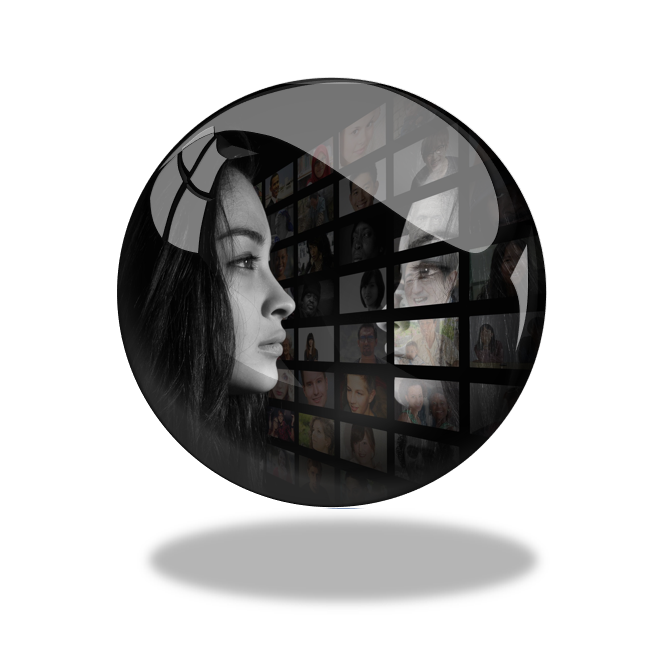
In our article on ‘
The Future of Change‘ we looked at the time dilemma facing those in leadership positions. Basically, how we need to overcome the pressure on our time created by a reactive approaches. Coupled with proposing practical strategies for stealing that time back to think ‘smarter’ about what’s coming.
everybody leads change
One thing the article didn’t cover however, is how the nature of ‘who’ is ‘leadership’ is also changing.
As more and more of human routine gets handled by AI, bots and automation, inevitably more and more of human responsibility will concern non-routine activity. Primarily activity concerned with change, relationships, and change in relationships.

Much of this change will need to be autonomous, self-directed. In part this is to avoid further overloading established leadership roles. But in bigger part, it will be because we will need to make these changes quickly and with direct understanding of the specific situation. Change leadership becomes everybody’s responsibility.
People at all levels will be making decisions that will change the nature of their relationships with their colleagues and all around them. They too will effectively be in leadership. This is a concept that is well understood in new coaching models – that we lead up, across, and within, as well as down. As Steven Covey put it ‘Leadership is a choice, not a position’.

But how will
they make decisions? Will they also get the thinking time necessary?
Perhaps that is the wrong question. The reality is that, unless they get to spend some of their time in thinking, they too will spend far more of their time in redoing, fixing, dealing with consequences, or other inefficiency.
Learning to Lead Change
Somehow, we, the people in more established leadership roles, need to prepare them for this choice. And prepare them for how to make the best decisions.
The best way to do this is to involve them in the decisions being made at a higher level. Doing so will bring for clear benefits. One, they will learn good thinking practices and tools. Two, they will learn the importance of engaging others in their own decisions. Three they will understand better how it all fits together, and have ownership that their decisions need to support that. And four, their more detailed knowledge and insight will be available to make the higher level decisions better.

Providing of course that the higher-level decisions are an exemplar of this approach.
We have spent a large part of the last 30 years modelling such participative decision making in top-level workshops. And also in lower-level meetings.

Over time we have developed and collated a wide range of practical resources to support this. We have made these resources freely available to all those seeking to better engage the hearts and minds of their people. And we have developed practical pathways for people to learn how to use them. Starting with easy intuitive tools and techniques, and building to more sophisticated ones. Basically, we have a tool for every situation, and every level of ability. We will provide links to explain these shortly, but first, there is a key point to make.
these tools are not dialogue-centric
That doesn’t mean that we don’t think dialogue is important. We do! Indeed, we think balanced, supportive, insightful, dialogue is vital! And all of our
tools are designed to lead onto and furnish such dialogue. It is just that we find, in meetings where verbal dialogue is pretty much the only form of communication, it is rarely balanced, supportive, insightful or inclusive. As such it is often a poor example of good decision making.
The reality is, as tensions rise, it tends to be overly-controlled by certain personalities, and dominated by those who believe their ideas should prevail. As such, it typically disadvantages those who may be quieter, more reflective, diverse, creative, introvert or junior. And it disadvantages them to the extent that, in some organisations, dominant personalities are more likely to succeed, and end up leading future meetings, and maintaining this culture.
But we need to use our meetings to build real participation and ownership at all levels, across diverse populations. Consequently, we need to give everyone a ‘voice’ so they can share in the ownership of the result, and cascade that commitment to their people.
Many of the toolsets you will encounter through the links below are about building that voice through non verbal participation. But, in doing so, they ensure that everybody’s opinion is ‘out there’. And, because of this, it informs a richer, more creative dialogue based on a broader context, more creative input, and more diverse sources.
Resources to Support Change Leadership

 Much of this change will need to be autonomous, self-directed. In part this is to avoid further overloading established leadership roles. But in bigger part, it will be because we will need to make these changes quickly and with direct understanding of the specific situation. Change leadership becomes everybody’s responsibility.
Much of this change will need to be autonomous, self-directed. In part this is to avoid further overloading established leadership roles. But in bigger part, it will be because we will need to make these changes quickly and with direct understanding of the specific situation. Change leadership becomes everybody’s responsibility. But how will they make decisions? Will they also get the thinking time necessary?
But how will they make decisions? Will they also get the thinking time necessary? Providing of course that the higher-level decisions are an exemplar of this approach.
Providing of course that the higher-level decisions are an exemplar of this approach. Over time we have developed and collated a wide range of practical resources to support this. We have made these resources freely available to all those seeking to better engage the hearts and minds of their people. And we have developed practical pathways for people to learn how to use them. Starting with easy intuitive tools and techniques, and building to more sophisticated ones. Basically, we have a tool for every situation, and every level of ability. We will provide links to explain these shortly, but first, there is a key point to make.
Over time we have developed and collated a wide range of practical resources to support this. We have made these resources freely available to all those seeking to better engage the hearts and minds of their people. And we have developed practical pathways for people to learn how to use them. Starting with easy intuitive tools and techniques, and building to more sophisticated ones. Basically, we have a tool for every situation, and every level of ability. We will provide links to explain these shortly, but first, there is a key point to make.











